Multi-point discharge model: study on corona discharge of double-ended needle in large space
Dingchen LI (李丁晨), Jiawei LI (李家玮), Chuan LI (李传),* ,Ming ZHANG (张明), Pengyu WANG (王鹏宇), Zhi LIU (刘志),Yong YANG (杨勇) and Kexun YU (于克训)
1 International Joint Research Laboratory of Magnetic Confinement Fusion and Plasma Physics, State Key Laboratory of Advanced Electromagnetic Engineering and Technology, School of Electrical Engineering and Electronics, Huazhong University of Science and Technology, Wuhan 430074, People’s Republic of China
2 State Key Laboratory of Advanced Electromagnetic Engineering and Technology, School of Electrical Engineering and Electronics, Huazhong University of Science and Technology, Wuhan 430074, People’s Republic of China
3 Digital Grid Research Institute, China Southern Power Grid, Guangzhou 510670, People’s Republic of China
4 The Fifth Bureau of China State Construction Engineering Corporation, Changsha 410000, People’s Republic of China
Abstract Corona discharge, as a common means to obtain non-equilibrium plasma, can generally obtain high-concentration plasma by increasing discharge points to meet production needs.However,the existing numerical simulation models used to study multi-point corona discharge are all calculations of small-scale space models, which cannot obtain the distribution characteristics of plasma in large space.Based on our previous research, this paper proposes a hybrid model for studying the distribution of multi-point discharge plasma in large-scale spaces,which divides the computational domain and computes separately with the hydrodynamic model and the ion mobility model.The simulation results are verified by a needle-ball electrode device.Firstly,the electric field distribution and plasma distribution of the needle electrodes with single tip and double tips are compared and discussed.Secondly, the plasma distribution of the needle electrode with the double tip at different voltages is investigated.Both computational and experimental results indicate that the charged particle concentration and current of the needle electrode with double tips are both twice as high as those of the needle electrode with a single tip.This model can extend the computational area of the multi-point corona discharge finite element model to the sub-meter (25 cm) or meter level, which provides an effective means to study the plasma distribution generated by multiple discharge points in large-scale space.
Keywords: corona discharge, numerical simulation, multi-point discharge, large space, double needle tip electrode
1.Introduction
Non-equilibrium plasma is widely used in gas purification[1-4], medical treatment [5, 6], surface modification [7, 8],activated water [9, 10], and other fields due to its large number of charged particles.In practical applications, higher concentrations of charged particles can be exchanged for greater gains [3, 11].Corona discharge is a common way to obtain non-equilibrium plasma[12].Increasing the number of discharge points is an effective method to increase the charge concentration [13].In corona discharge research, methods to increase the discharge point generally include array electrodes, barbed wire, single needle double tip, nanocoating, and so on [14-16].In order to increase the concentration of charged particles more effectively, it is very necessary to conduct in-depth research on the discharge mechanism in multi-point discharge geometries, especially the distribution of charged particles and the electric field.
In general, there are two ways to obtain the distribution characteristics of charged particles and electric fields: experimental measurements and numerical simulations.Experimental measurements can directly obtain charged particle concentration [17, 18].However, due to the complex electromagnetic environment, the distribution of charged particles around the electrodes cannot be obtained.Numerical simulation can obtain the physical quantities in the computational domain by calculation according to the existing physical laws, which is convenient and low-cost [19].At present, there are three main models for corona discharge numerical simulation research: the chemical kinetic model,ion mobility model, and hydrodynamic model [20-23].The previous studies on multi-point discharge using these three models are summarized in table 1.
The chemical dynamic model is to set the chemical reaction and reaction rate caused by ionization according to the ionized gas to realize the calculation of the corona discharge model.For the air under atmospheric pressure in this study,there are 27 kinds of chemical reactions that need to be considered[24].The amount of calculation is very large,and it is difficult to calculate the model of a large computational domain.
The ion migration model is to solve the ion transport equation by setting up a particle source.The amount of calculation is small, and the corona discharge model with a large space can be calculated.However, the electrode structure of the ion migration model must be highly symmetrical,such as a wire electrode.For complex electrode structures with multiple discharge points, the ion migration model cannot achieve accurate calculation [25, 26].
The hydrodynamic model is to consider the interaction of electrons, negative ions, and positive ions, and solve the Navier-Stokes (N-S) equation to calculate the corona discharge model, which can calculate the complex electrode structure [22, 23].However, it contains many kinds of particles and complex particle reactions, which leads to a large amount of calculation and cannot expand the calculation domain of the model.
Although the models in table 1 solve the calculation problem of the multi-point discharge model to a certain extent, they all belong to the calculation in small-scale space(a few millimeters to a few centimeters).Due to the huge computational load caused by multiple discharge points and their interactions, the single model proposed in this paper cannot perform a numerical simulation of multi-point corona discharge in a large space.Based on the hydrodynamic model and the ion mobility model, a sub-regional hybrid model is established in[17,18].This method enables the simulation of corona discharge for a single-tip electrode with large spacing(25 cm).The core idea is to use the hydrodynamic model to numerically simulate the physical quantities in the ionization zone, and to use the ion mobility model to simulate the motion characteristics of the charged particles in the ionization zone.Based on the theory of the above hybrid model,we utilize the hydrodynamic model to calculate the characteristics of the complex electrode structure and improve the hybrid model [31].Finally, a simulation example for a largespace multi-point discharge model is given.This study expands the application scope of the hybrid model in gas discharge research and provides a practical approach for the establishment of simulated multi-point discharge models.
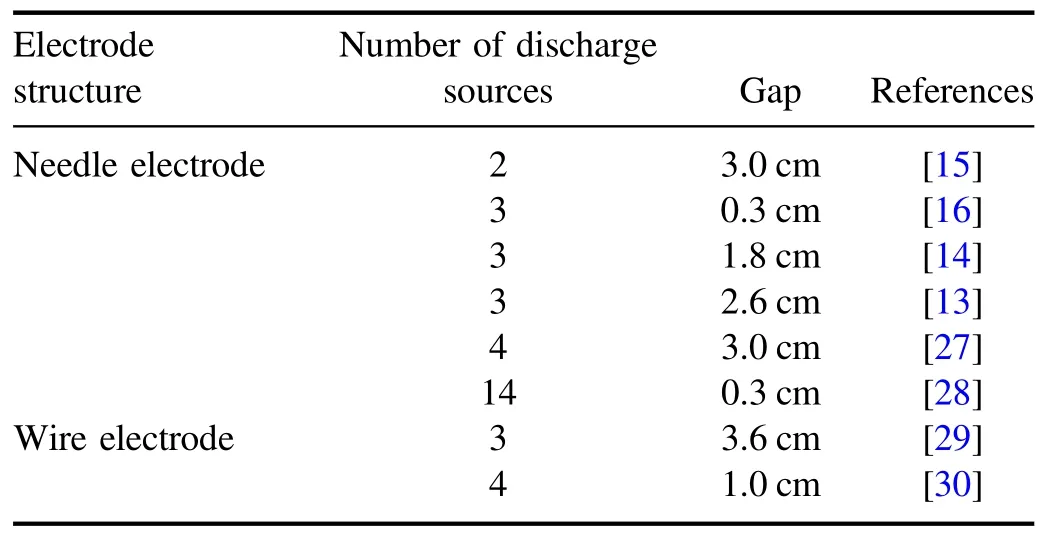
Table 1.Summary of characteristic of different multi-point discharge models.
2.Model principle
2.1.Method description
The computational difficulty of the large-space multi-point discharge mode is mainly due to the large number of discharge points, the large calculation area, and the large computational workload.Therefore,it is very difficult to rely on a single model for corona discharge with multiple points in a large space.
As we all know, corona discharge can be divided into two regions according to the different particle distributions:the ionization zone and the drift zone.The ionization region of negative corona discharge consists of three types of particles: electrons, positive ions, and negative ions.In this region, the reactions of particles are very complex.The drift region mainly contains negative ions [26].Therefore,according to the different regions formed by the particle reaction of corona discharge,this paper proposes a method for region segmentation using multiple models (hybrid models),thereby extending the computational scope of discharge modes.The hybrid model uses a hydrodynamic model to calculate various particle reactions in the ionization region,and the ion mobility model calculates the particle distribution in the drift region [17,18,31].However,all of the above are studies of a single discharge point.In order to study the discharge characteristics and particle distribution characteristics of multi-point discharge in a large space, we propose a multi-point discharge model by utilizing the characteristics of the hydrodynamic model, which can calculate asymmetrical electrode structures, and the ion mobility model, which can enlarge the computational domain.
Figure 1 shows the basic principles of the hybrid model.E and Nnon ESoof the ionization zone model are calculated by the hydrodynamic model (considering the reactions of electrons and negative and positive ions).Then,the calculated Nn,as the particle source of the ion mobility model,is used to solve the physical quantities(E and Nn)of the drift zone.The ESirequired in the next iteration can be obtained in the drift region model.The above iterative steps are repeated until the E on the ESois continuous.
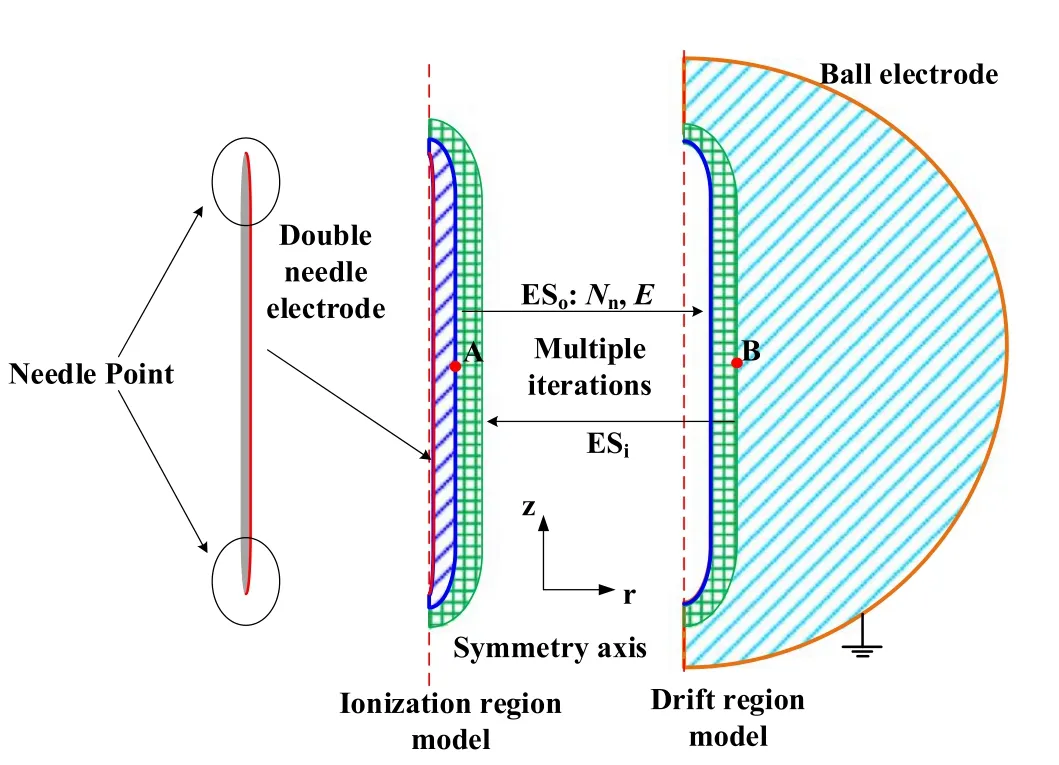
Figure 1.Schematic of obtaining the equipotential surface of the multi-point discharge model.ESo, ESi, Nn, and E represent the equipotential surface used to calculate the drift zone model, the equipotential surface used in the ionization zone model calculation,the concentration of negative particles and the electric field distribution on the ESi, respectively.
For the acquisition method of the equipotential surfaces ESoand ESi,in the previous study,the single point discharge model can select the point near the needle tip as the point of reference to gain the equipotential surface ESo.However, in the multi-point discharge model,the point near the needle tip is chosen as the point of reference, which may cause the two discharge sources to be split into two computational domains.Dividing the two discharge sources into two independent computational domains ignores the influence between the discharge points, thus reducing the calculation accuracy.In addition, the point of reference near the needle tip may also increase the number of iterations, thereby increasing the overall computational complexity of the hybrid model [17].On this basis, the middle point of the two discharge points is selected as the reference dot,and an equipotential plane ESois obtained,as shown in dot A in figure 1.In each iteration,the equipotential surface ESoincludes two discharge points in one computational domain and can correct the ESofrom dot A in both directions simultaneously,which enables the hybrid model to achieve faster convergence.Similarly, dot B is the reference dot for the drift zone model to gain ESi.The simulation results and discussion of the multi-point discharge model are presented in section 3.
2.2.Model equations and conditions
The multi-point discharge model uses the same governing equations as the single-point discharge model [31].The governing equations of the ionization zone and the drift zone are shown in table 2.
In table 2, N is the particle density; α, η, β are the Townsend ionization coefficient, attachment coefficient, and recombination coefficient, respectively; D is the diffusion coefficient; v is the velocity of motion of the particle in relation to the electric field; φ, Es, ρn, and ε0are the applied potential, electric field strength, negative ion density, and vacuum permittivity, respectively; S is the source term of thebackground caused by cosmic decay, plutonium decay,human activities,etc;j,K are the negative ion current density and negative ion mobility, respectively; and w is the additional superposition velocity.The swarm parameters involved in the governing equation are summarized in table 3.

Table 2.Summary of the governing equations of the ionization zone and the drift zone (e: electron, n: negative ion, p: positive ion).
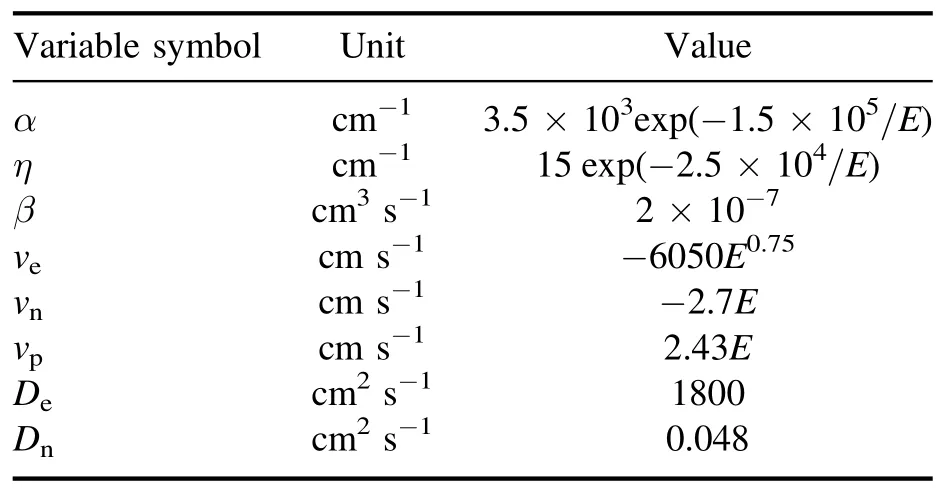
Table 3.Summary of transport coefficients.
Figure 2 shows the geometry and boundaries of the multipoint discharge model.The distance between the two needle tips is 4 cm.The radius of the semicircle (ball electrode) is 25 cm.The mesh division of the model is directly related to the calculation accuracy and efficiency of the model.If the mesh size is too small,it will increase the amount of computation and waste computing resources.If the mesh size is too large, the model will not converge.The larger the ion concentration gradient, the denser the mesh needs to be [31].According to previous studies [23], the ion concentration near the needle electrode changes the most, so the maximum size of the grid cannot exceed 0.001 mm.Compared with that near the tip of the needle, the particle concentration change gradient near the equipotential surface ESiis smaller, and the mesh size is slightly larger than that near the tip of the needle, but the maximum cannot exceed 0.003 mm.In addition, in order to save computing resources, the grid size of the rest of the ionization region is no more than 0.08 mm.For the drift region,the particle species are single,and the variation gradient of ion concentration is relatively small.Therefore, the grid size near ESois no more than 0.01 mm, and the grid size near the earth electrode is no more than 0.1 mm.The grid size of the rest shall not exceed 4 mm.The solver is a transient solver with a maximum solution time of 10-3s.The ionized gas is air at standard atmospheric pressure with a temperature of 293.15 K.Table 4 summarizes the boundary conditions for the ionization zone model and the drift zone model.
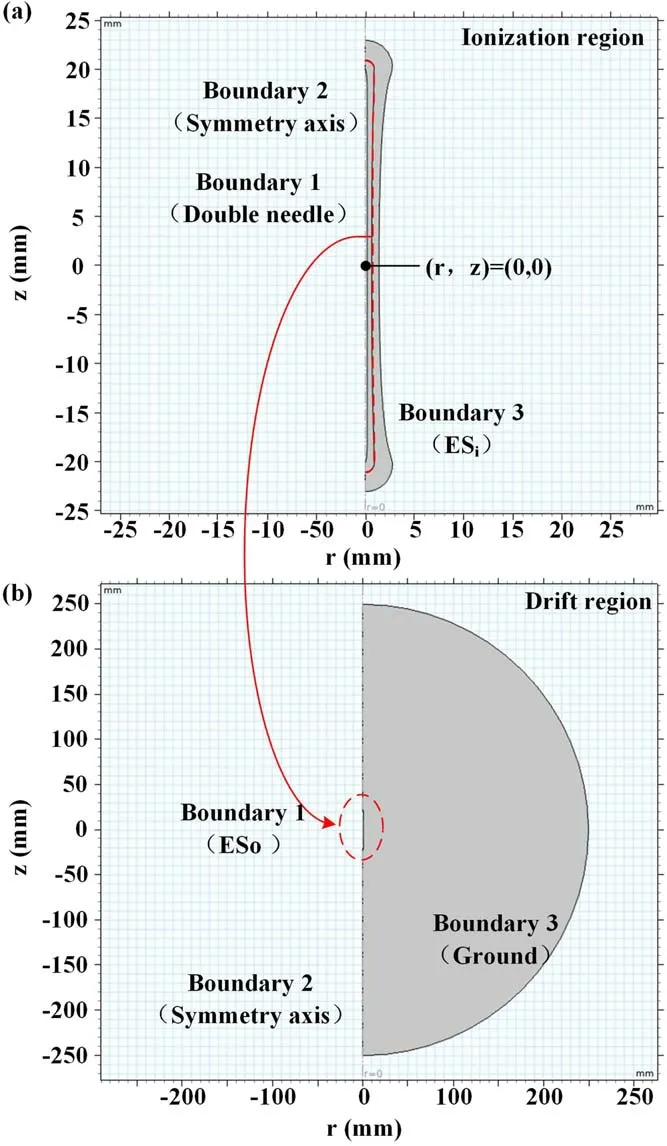
Figure 2.2D symmetrical boundaries of ionization region and drift region of multi-point discharge model.
3.Simulation and discussion
3.1.Simulation of electric field and charged particle distribution
The electric field distribution can reflect the interaction between the discharge points.In addition, it can help explain the distribution characteristics of charged particles.Figure 3 shows the electric field distribution in the ionization zone near the needle electrode.As is known, one of the necessary conditions to ensure self-sustained discharge is that the electric
field E > 106V m-1.As shown in figures 3(a)and(b),due to the small curvature radius of the needle tip, the electric field near the two needle tips will be distorted,so the electric field at the needle tip is extremely large.The electric field drops sharply in the region slightly further from the needle tip.The electric field strength at 0.1 mm below the needle tip is 106V m-1,and this region can ensure self-sustained discharge,so this area is called the ionization region.
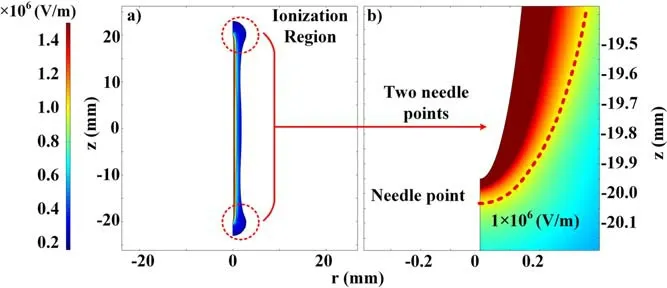
Figure 3.Electric field distribution in ionization region at-12.6 kV.

Table 4.Boundary conditions of ionization zone and drift zone(Va,γ,Vesi,and Veso respectively are the voltage of the high-voltage electrode,the secondary electron emission coefficient, the electric potential on ESi, and the electric potential on ESo).
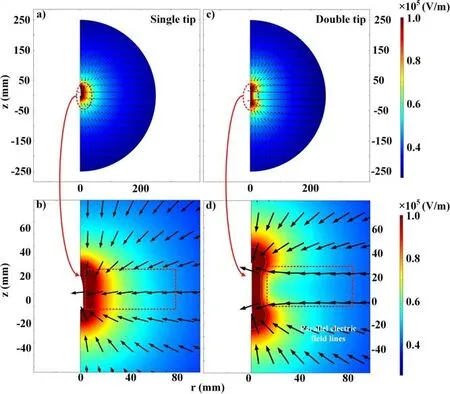
Figure 4.Electric field distribution characteristics of single tip electrode and double tip electrode in drift zone.
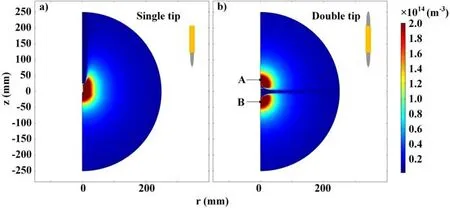
Figure 5.Negative particle distribution characteristics of the needle electrodes with single tip and double tip at -12.6 kV.
Figure 4 show the electric field distribution of needle electrodes with the single and double tips in the drift region.Since the potential of the needle electrode is lower than that of the spherical electrode during negative corona discharge, the electric field lines of the single electrode and the double electrode all extend from the spherical electrode to the needle electrode.The angle between the electric field line near the middle position of the needle electrode with a single tip and the needle body is an acute angle.However, the electric field lines near the middle position of the needle electrode with double tips are parallel to each other and perpendicular to the needle body.The distortion of the electric field lines shows that there is a certain interference between the electric fields generated by the discharge points.The distribution of the electric field has a great influence on the distribution of charged particles.
The distribution of negative ions in the drift region of the needle electrodes with single and double tips is shown in figure 5.The high-density negative ion regions of needle electrodes with single and double tips are mainly located near the needle tips.The needle electrode with a single tip has a high-density negative ion region whose upper boundary is at an acute angle to the needle body.The needle electrode with double tips has two high-density negative ion regions, which are symmetrically distributed, as shown in A and B in figure 5(b).The lower boundary of the A region is parallel to the upper boundary of the B region.The reason why the charged particle distribution of a needle electrode with a double tip is different from that of a single tip electrode is that the electric fields generated by the two discharge points are superimposed on each other.The electric field line distribution in figure 4 also provides strong evidence for this interpretation.
In the case of -5.9 to -12.6 kV, the concentration distribution of negative ions is shown in figure 6, which facilitates the analysis of the distribution of charged particles.It is clear that when the voltage is increased, the negative ion concentration regions of either the ionization or drift regions diffuse outward.In addition, since the ionization is mainly concentrated at the needle tip, the negative ion concentration in the middle of the needle electrode in the drift region is much lower than that at the needle tip.
Figure 7 shows the calculation results of the current and the negative ion concentration of the single tip model and the double tip model.It is not difficult to find that their current is in line with the law of Townsend discharge.The negative particle concentration is proportional to the voltage.The current and negative ion concentration of the double tip structure are twice as high as those of the single tip structure.

Figure 6.Concentration distribution of -5.9 to -12.6 kV negative ions in the ionization zone and drift zone.

Figure 7.Calculated values of negative particles and current at different voltages (Nn is the negative ion concentration).
4.Experimental verification
As shown in figure 8,experiments to verify the accuracy of the multi-point discharge model were carried out with the needleball electrode device.The needle electrode is a double tip electrode or a single tip electrode,wherein the distance between the two needle tips of the needle electrode with double tips is 4 cm.The high-voltage electrode(single point or double point)is fixed at the center of the ground electrode (ball electrode) by a Plexiglas tube and is connected to a negative-polarity DC power supply (Teslaman TD2200).The ball electrode consists of two hemispheres made of stainless steel, which are connected in series with an ammeter (Keithley 6485) and then grounded.There is a measuring hole on one side of the ball electrode,which is used to place an air ion counter(AIC2)to measure the density of charged particles in the ball.AIC2 sucks the air in the ball electrode by pumping and counts the ions sucked in the air with the built-in electrode plate.
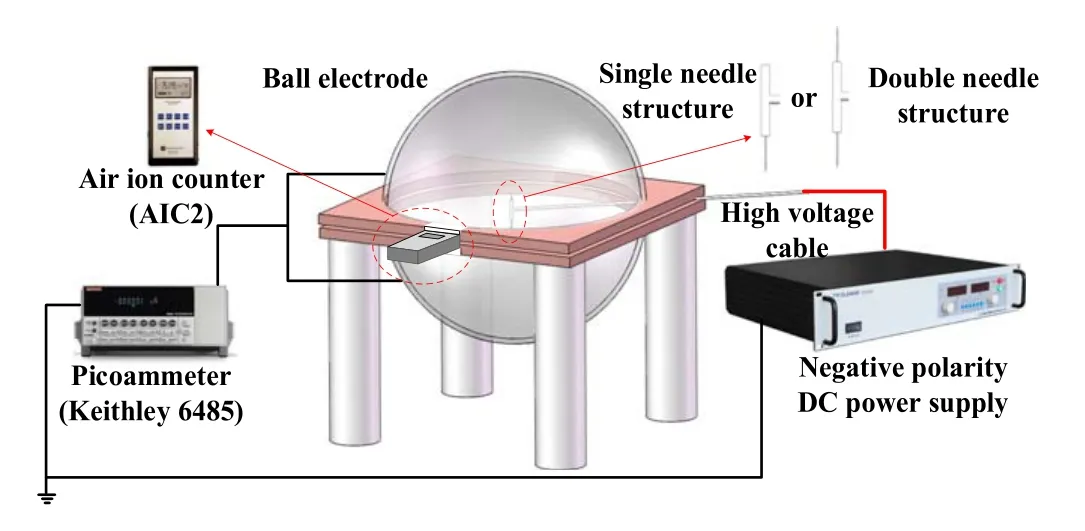
Figure 8.Needle-ball electrode experimental setup.
4.1.Accuracy verification of multi-point discharge models
The simulation and experimental values of the charged particle concentration are shown in figure 9.It is obvious that the charged particle concentration increases linearly with voltage,whether it is the simulation value or the experimental value.The deviation between the simulation results and the experimental results is 1%-9%.The error does not exceed 10%,which is acceptable.

Figure 9.Comparison of simulation and experimental values for charged particles for the needle electrode with double tip structure.
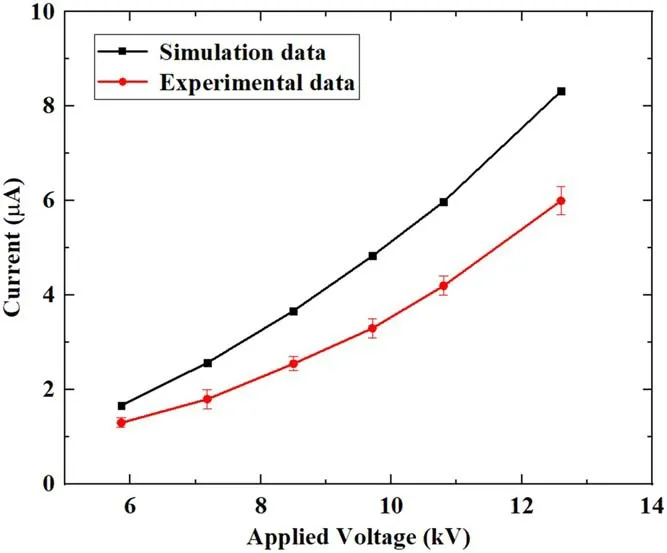
Figure 10.Comparison of simulation and experimental values for current for the double-needle electrode structure.
The accuracy of the model can also be verified by the VA characteristic.As shown in figure 10, both the calculated and experimental values of the current are proportional to the voltage squared,and the growth trend is consistent.However,the error between the calculated and simulated values of the current ranges from 28% to 43%.The error in the current is significantly larger than the error in the charged particle concentration.There are two main reasons for this difference as follows.(1) The model does not consider the influence of ion wind, which generates turbulent flow inside the ball electrode and reduces the number of negative ions reaching the ball electrode.(2) The pumping action of the air ion counter(AIC2)overcomes the effects of turbulence caused by the ion wind within the ball electrode.
4.2.Influence of the number of discharge sources
In order to study the effect of the number of discharge sources on the discharge effect, the discharge effects of the needle electrodes with double tip and single tip are shown in figure 11.Obviously,after increasing the number of discharge points,both the discharge current and the charged particle concentration increase,which is about twice that of the single electrode.This is consistent with the calculation results of the needle electrodes with double tips and the single tip in figure 7, which further reflects the accuracy of the model.Figure 12 shows the discharge power of the single tip electrode and double tip electrode.The power of a double tip electrode is twice that of a single tip electrode, which is the same as the law of current.This further illustrates that increasing the number of discharge sources can obtain more charged particles to meet production needs.

Figure 11.Influence of the number of discharge points on the experimental value of the current and ion concentration.

Figure 12.Influence of the number of discharge points on the experimental value of the power.
5.Conclusion
In this work, a multi-point discharge model is established to study the distribution of charged particles in a large space.The basic principle and boundary conditions of the hybrid model are given in this paper.The electric field and charged particle distribution of needle electrode structures with single and double tips are calculated.Finally, the accuracy of the model is verified by experiments.
The basics of this model are to use the hydrodynamic model to calculate the characteristics of particle distribution in complex electrodes and small computational domains, and to calculate the physical quantities (electric field, ion concentration, etc) in the ionization region.Then, the obtained ion concentration, as the particle source of the ion mobility model, is used to calculate the drift zone, and the calculation domain of the whole model is enlarged.The charged particle concentration and current generated by the needle electrode structure with a double tip is twice that of the needle electrode structure with a single tip.The electric fields generated by the discharge points are superimposed on each other, and the resulting combined electric field directly affects the distribution of charged particles.The experimental results show that the charged particle concentration and current simulated by this method are in good agreement with the experimental data, thus verifying the correctness of the model.
Although a needle electrode structure with a double tip is used as the research object in this study, since the hydrodynamic model used in this model can calculate the complex electrode structure,it is also applicable to other more complex electrode structures (electrode structures with multiple discharge points, such as barbed wire electrodes, array electrodes, and wire electrodes).In addition, the hybrid model can also be used to study the discharge mechanisms of electrodes with different shapes and positions.
Acknowledgments
This work is supported by National Natural Science Foundation of China (Nos.52207158 and 51821005), the Fundamental Research Funds for the Central Universities (HUST:No.2022JYCXJJ012), and the National Key Research and Development Program of China(Nos.2016YFC0401002 and 2016YFC0401006).
ORCID iDs
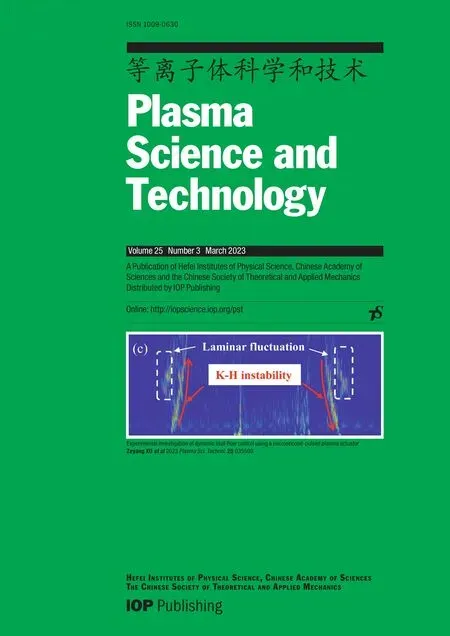 Plasma Science and Technology2023年3期
Plasma Science and Technology2023年3期
- Plasma Science and Technology的其它文章
- Relativistic toroidal light solitons in plasma
- Valley-dependent topological edge states in plasma photonic crystals
- Bulk moduli of two-dimensional Yukawa solids and liquids obtained from periodic compressions
- Modeling of magnetized collisional plasma sheath with nonextensive electron distribution and ionization source
- Observation of the poloidally asymmetrical density perturbation of sawtooth collapse on J-TEXT
- Alfvén continuum in the presence of a magnetic island in a cylinder configuration
